3,686 km from mainland Chile, 5 hours by plane, and with no port or harbour, Easter Island is one of the most remote inhabited islands in the World. Famous for its big heads, or Moai as they are known in Rapa Nui culture, Easter Island is a unique and magical place, due to its extreme geographical isolation and the myths surrounding those that once inhabited the island and built some 800 stone heads, some weighing as much as 82 tonnes!!
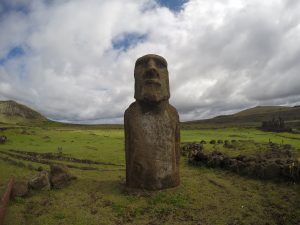
Only one airline flies to the island, providing one flight a day in low season, and two between December and February. During the 80s, NASA expanded the runway on this tiny island to use it as an emergency landing spot for space shuttles if ever required, which allowed the island to receive larger planes, thus enhancing the island’s tourist industry. The humidity struck us as soon as we walked off the plane; Easter Island has a tropical rainforest climate, however no evidence of any previous rainforest remains, as the island was entirely deforested during the period of Maoi construction, estimated to be between 1400-1650AD – a powerful visual reminder of mankind’s destructive capabilities!
We stayed in a hostel that also provided camping facilities, as well as tents for those without their own. We were relieved to have chosen the camping option given the number of cockroaches roaming about inside, and camping right on the coast was a constant reminder of the fact that we really were on an island in the middle of nowhere! We had been warned that food on the island is expensive; it didn’t strike me as being too bad, but for students it is definitely on the more pricey side. So we took enough with us for one big meal a day, bought breakfast items in the mini markets, and ate out once a day. Unsurprisingly, as we were on an island, the seafood was pretty darn good, and drinks were more or less the same price as in Santiago.
The first day we meandered through the town towards the museum – although small, it’s well worth a visit to introduce yourself to the island’s history and culture. We then signed up for all three tours provided by one of the main tour companies, Mahinatur, which involved two half day tours and a full day one. I can’t recommend doing a tour highly enough, unless you happen to already be a true expert on Rapa Nui culture. Yes, you can hire cars, bikes or quad bikes and tour the island yourself, but the information provided by the guides is what made paying for a tour 100% worth it. The guides alternated between Spanish and next to fluent English.
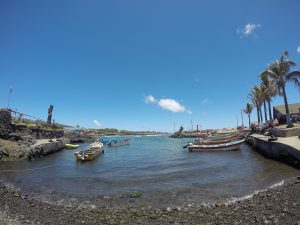
The sense of mystery surrounding the island truly became clear as we were taken step by step through the history of the Rapa Nui people, visiting various archeological sites, Moai heads, caves, quarries and important geograhpical spots. We visited the tropical beach of Anakena where it is thought the first settlers landed, various quarries where the Moai were carved and then supposedly rolled using various techniques to their resting places, three volcanic craters which form the island and many, many Moai platforms.
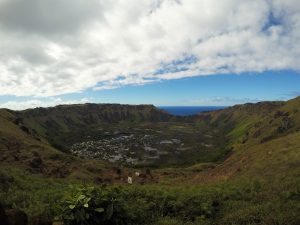
Of course, one of the highlights had to be Tongariki (the famous 15 heads) with their backs to the ocean. In fact the vast majority of Moai face inwards, as they were erected to protect the various clans on the island from outside threats using their spiritual powers; they watched over their people. But during the many wars on the island, clans would topple the Moai of fellow clans, as if to expose them to the outside world, hence why many of the Moai are now broken or lying on their front. But in reality, we still don’t really know exactly why these Moai were erected, any many questions remain concerning the role they played in Rapa Nui culture. This is because over time, Islanders adopted other cults and religions, such as that of the Birdman, involving a gruelling competition in which elite members of each clan would swim to fetch the the first egg of the season from the offshore islet in order to be crowned King of the island, and later on Christianity with the arrival of a single missionary. Exacerbated by the absense of any written accounts, this means that scientists and historians have no direct information from the time. Instead, they have relied on oral tales, comparisons with other Polynesian cultures, carrying out their own experiments (for example trying out different techniques to determine how the Moai were moved) as well as looking at the current ecology of the island.
Depletion of natural resources led to a huge decline in the population, and even resulted in cannibalism. More recently, during the early 20th century, the island was leased to a British company that used it for sheep farming. Islanders maintain that this did improve their quality of life,, however they were fenced in to the only small town on the island, unable to leave, apart from to work on the sheep farms. Today Easter Island is home to about 6,600 people.
It’s hard to say how the Islanders feel about tourism. It’s relatively new to the island, only really taking off in the 80s. On one hand, it provides the locals with an income; without the tourist industry, the restaurants and cafés would have no one to serve, and tour agencies would cease to serve a purpose. Tourism has undoubtedly helped the village to expand, and enables locals to keep their culture alive through shows and demonstrations to tourists. Seeing a show one evening really was a feel good and exhilarating experience, far more exciting than we had expected! We were quite disappointed that none of us were invited to dance with the terribly good looking men dressed in nothing more than a feather belt and headress!
On the other hand, outside one of the more luxury hotels there was a permanent camp displaying signs with slogans such as ’40 years of robbery’. As in other parts of Chile, there is an ongoing dispute over who owns the island’s land; the Chilean government owns a large portion of it, but locals claim ownership. For some, the expansion of the tourist industy has resulted in their lands being used for development, and some argue that the revenue generated from tourism does not remain on the island. Another concern is the increasing amount of waste being generated by the increasing number of tourists arriving, as it is hard to dispose of on an island. It seems therefore that it is a question of finding the balance between the two, between allowing the tourist industy to develop and provide a vital source of income, and preserving the lands and culture of a community that is used to being relatively untouched by the rest of the world.
Flights to Easter Island are far from cheap, and once you’ve added in the cost of tours, food, drinks and perhaps a show or vehicle rental, its not a cheap trip. We were lucky enough to buy our flights during a flash sale, something certainly worth looking out for if you’re thinking of heading there. Nevertheless, I have not come across a single person who has regretted their decision to fork out for the trip. Travelling to Easter Island really is a once in a lifetime experience, and an experience to learn about a culture so different from our own. It was a truly fantastic experience to walk on the lands of a place so remote, so unique and about which we really know so little. An air of mystery surrounding its people still hangs in the air, and it will remain that way forever.
Next stop: Machu Picchu!
Ciao for now,
Beth

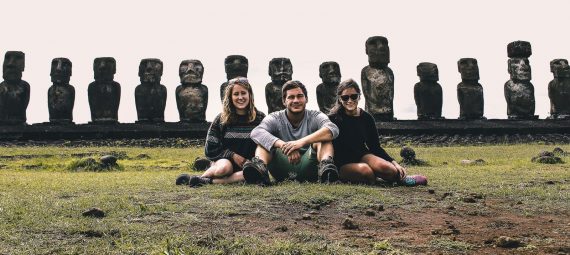
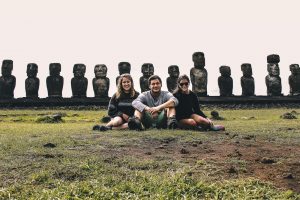
Very good summary. Just one thing: the Island is 3.750 kms away from chilean coast
Brilliantly written. What a lovely insight in to Easter Island. Always wanted to go but went to Patagonia instead. So good that you have so much time to explore – you’ll be an expert.
Bonne Chance! Lynne